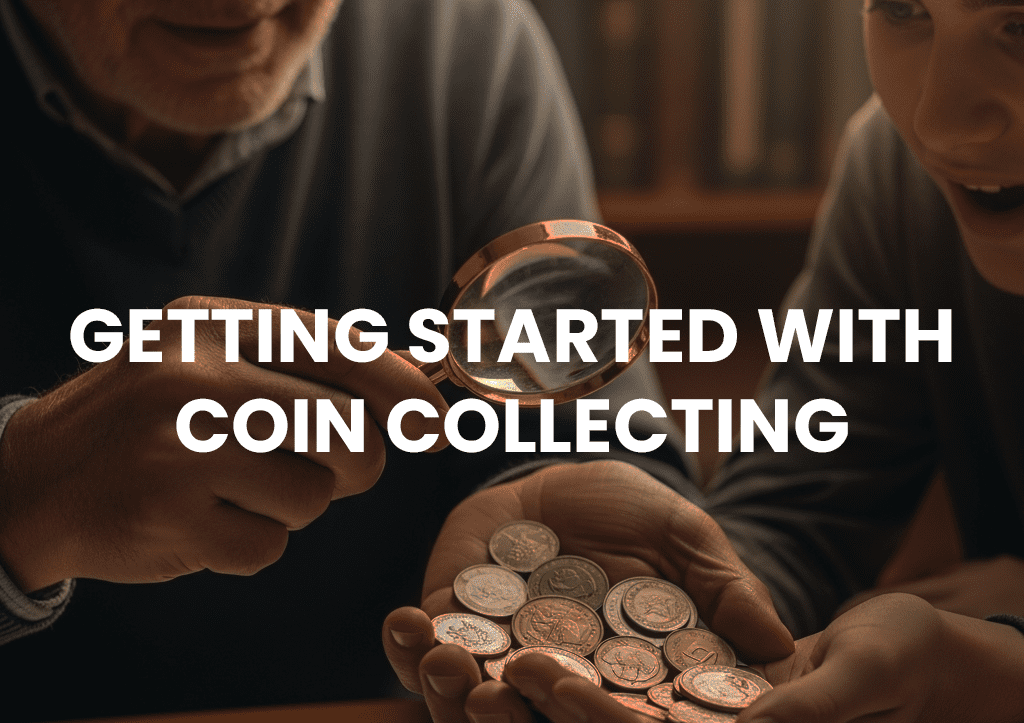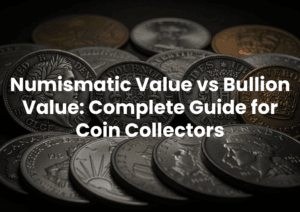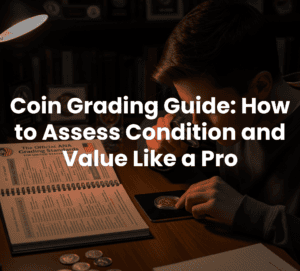Coin collecting combines history, art, and investment potential in tangible assets. Beginners succeed by understanding numismatic value, starting with government mint coins, and avoiding common authentication mistakes. Proper storage and grading knowledge protect long-term value.
Key Collecting Principles
- Start with $200-500 budget for initial purchases
- Government mint coins offer best liquidity for beginners
- Professional grading protects value for coins over $100
- Never clean coins – destroys numismatic value permanently
Numismatic Value vs. Metal Content
Coin collecting differs from bullion investing through numismatic premiums. A modern American Silver Eagle contains $30 worth of silver. A rare 1916-D Mercury Dime with less silver sells for $1,000+.
Rarity, historical significance, and collector demand create value beyond metal content. Understanding this distinction determines collecting success.
Essential Terminology
Numismatic value represents collectible worth beyond metal content. Premium indicates the amount paid above spot price. Grading uses a standardized 1-70 scale for condition assessment.
Proof coins receive special minting treatment for collectors. Mint State describes uncirculated coins in original condition. These terms appear in every dealer listing and price guide.
Primary Coin Categories
Government Mint Coins
Modern government coins provide ideal entry points for new collectors. American Silver Eagles, Canadian Maple Leafs, and British Britannias combine precious metal content with government backing.
These coins cost $35-55 per one-ounce silver piece. Higher premiums reflect guaranteed authenticity, universal recognition, and immediate liquidity. Every dealer accepts them without question.
Historical U.S. Coins
Pre-1965 silver coins represent finite American history. Morgan silver dollars, Walking Liberty half dollars, and Mercury dimes gain value from increasing scarcity.
The U.S. stopped making silver coins for circulation in 1965. Existing supplies face growing collector demand. Each coin carries stories from its era – Depression hardships, wartime sacrifices, post-war prosperity.
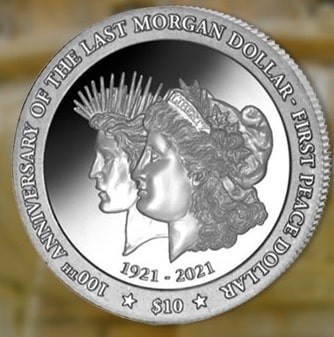
International and Commemorative Issues
Foreign coins expand collecting possibilities. Mexican Libertads, Chinese Pandas, and Australian Kangaroos maintain dedicated followings. Limited-mintage commemoratives celebrating Olympics or space exploration appreciate when chosen carefully.
Proof vs. Circulated Conditions
Proof coins cost more but appeal to perfection seekers. Multiple strikes with polished dies create mirror surfaces and sharp details. Circulated coins show wear but cost less, perfect for building type sets affordably.
Making Smart First Purchases
New collectors face aggressive sales tactics and overwhelming choices. Starting with $200-500 allows several quality coin purchases without major risk.
Beginner Collection Strategies
The Silver Sampler ($200-300) includes 2-3 current American Silver Eagles, 1-2 pre-1965 silver dollars, and several Mercury dimes in VF-XF condition.
The History Collection ($350-500) features one Morgan silver dollar from common 1880s-1890s dates, one Walking Liberty half dollar, one Peace silver dollar from 1922-1925, and a roll of 1940s-1960s Washington quarters.

Trusted Purchase Sources
Local coin shops build relationships and provide education. Established online dealers like GR Reserve and APMEX offer vast selections with competitive pricing. Regional coin shows allow firsthand examination and price comparison.
Major auction houses serve experienced collectors seeking rare pieces. Start with retail purchases before attempting auction bidding.
Warning Signs
Legitimate dealers never pressure immediate decisions. Walk away from anyone refusing close coin examination. Extremely low prices indicate damaged, cleaned, or counterfeit coins. Cold-calling telemarketers always overcharge.
Essential Equipment and Storage
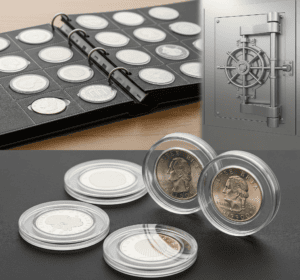
Storage Systems
Coin albums display series collections attractively while providing protection. Airtight capsules prevent fingerprints and environmental damage on valuable pieces. Bank safety deposit boxes secure high-value coins.
Handling Tools
Cotton gloves prevent skin oils from damaging surfaces. Quality magnification reveals details and problems. LED desk lamps provide proper illumination. Soft cloths clean holders, never coins directly.
Reference Materials
The Red Book updates U.S. coin values annually. Coin World and Numismatic News cover weekly market trends. PCGS CoinFacts and NGC databases provide detailed specifications online.
Understanding Professional Grading
Grading determines condition and dramatically affects value. Professional services use standardized 70-point scales where each grade level means hundreds or thousands in price differences.
The Grading Scale Explained
| Grade Range | Condition | Description |
|---|---|---|
| 1-3 | Poor | Barely identifiable coin type |
| 4-20 | Fair to Very Good | Heavy wear with major details visible |
| 21-45 | Fine to Extremely Fine | Moderate wear with most details clear |
| 46-58 | About Uncirculated | Light wear but all major details sharp |
| 59-70 | Mint State | No visible wear (uncirculated) |
When Professional Grading Pays
Consider grading for coins exceeding $100 value. The $20-50 fee provides authentication, detailed assessment, and protective holders. Coins worth $500+ almost always benefit from professional certification.
Basic Authentication Methods
- Weight Test: Precise scales detect discrepancies – fake coins often weigh wrong
- Magnet Test: Real gold and silver aren’t magnetic
- Sound Test: Genuine coins produce distinct ringing sounds when dropped
- Visual Inspection: Learn what authentic coins should look like
Building Focused Collections
Random buying produces mediocre results. Successful collectors follow strategies aligned with specific interests.
Thematic Approaches
Design series focus on all Walking Liberty coins across denominations. Era collections target specific decades like 1940s-1960s. Country specialization explores Canadian or Mexican coinage. Metal type collections concentrate on pure silver or gold only.
Set Building vs. Key Dates
Set building completes entire series methodically. Key date collecting targets rarest, most valuable coins across different series. Quality surpasses quantity for long-term appreciation.
Five high-grade coins outperform twenty mediocre examples. Beautiful coins provide more enjoyment than damaged pieces.
Storage Security Best Practices
Fundamental Rules
Never clean coins – cleaning destroys value permanently. Handle coins by edges exclusively. Store in stable environments avoiding temperature and humidity fluctuations.
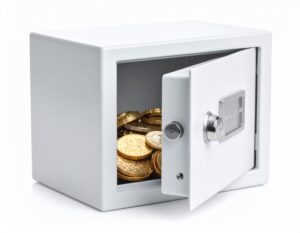
Home Security Measures
Maintain collection privacy. Use fireproof safes for valuable pieces. Store inventory records separately. Consider security systems as collections grow.
Insurance Considerations
Homeowner’s policies limit collectibles coverage. Specialized collectibles insurance provides better protection at reasonable cost. Document all purchases for claims.
Avoiding Costly Beginner Mistakes
Impulse Purchase Problems
Buying without research leads to overpaying for common coins. Learn current market values before any purchase. Understand condition standards for accurate pricing.
High-Pressure Sales Tactics
False urgency claims indicate overpricing. Legitimate deals allow research time. Professional dealers respect informed decision-making.
Authentication Failures
Modern counterfeits fool experienced collectors. Buy from reputable sources. Learn basic authentication. Use professional grading for valuable coins.
Storage Damage
PVC-containing holders cause long-term damage. Use only archival-quality materials designed for numismatic preservation.
Expanding Numismatic Knowledge
Educational Resources
The Red Book provides comprehensive U.S. coin information. Specialized books cover individual series in detail. Monthly publications track current market trends and discoveries.
PCGS and NGC websites offer extensive photo databases. Collector forums provide community knowledge. Respected dealer videos demonstrate visual learning.
Suggested Reading: Silver Eagle Collector’s Guide: Coin Values and Key Dates
Local Connections
Coin clubs meet monthly in most cities. Regional shows feature educational seminars and trading opportunities. Experienced collectors mentor newcomers through these venues.
Dealer relationships develop over time. Fair dealing and serious interest earn better opportunities and preferential treatment.
Market Timing and Exit Strategies
Buying Opportunities
Metal price drops create value opportunities. Sellers needing quick cash often accept below-market offers. Economic uncertainty increases tangible asset demand.
Selling Considerations
Popular government coins sell easier than obscure pieces. Rare coins in high grades attract premium buyers. Coins held over one year qualify for capital gains treatment.
Maintain detailed purchase and sale records. Build dealer relationships for future liquidation. Consider major auction houses for exceptional pieces.
Start Your Numismatic Journey
Quality coin collections preserve wealth while providing educational enjoyment. Focus on authenticated pieces within budget constraints. Connect with local dealers and collector communities for guidance.
GR Reserve offers expertly curated coins for beginning and advanced collectors. Our numismatic specialists help build meaningful collections aligned with your interests and investment goals.
Contact us today to explore our selection of graded coins and government mint products perfect for starting your collection.
